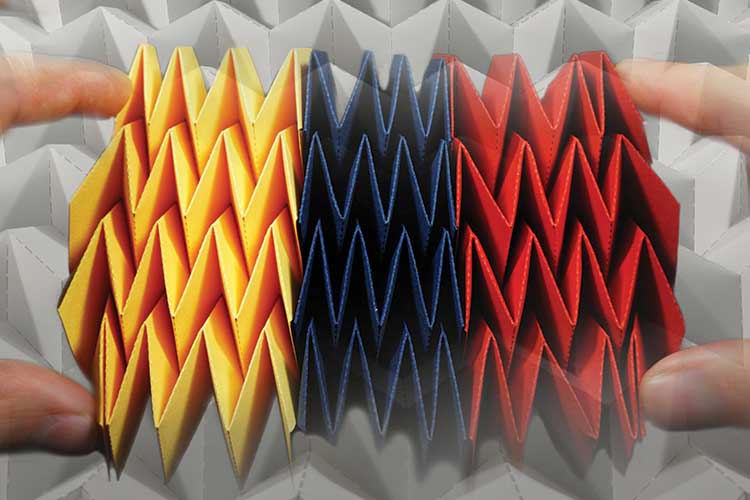Origami Metamaterials | 17 Feb 2022
For Prelims: Origami Metamaterials, Metamaterials and its properties
For Mains: Achievements of Indians in Science & Technology
Why in News?
Researchers from Indian Institute of Technology Madras have developed such a material, called Origami metamaterials which could have many uses.
- These combine the Japanese art of paper folding (origami) and the existing material of choice and fold it to obtain desired properties.
What are the Origami Metamaterials?
- Researchers have developed a special class of origami metamaterials which show a constant value of Poisson Ratio when subjected to stress.
- When a material is crushed or stretched along a particular direction, it undergoes a modification in the perpendicular, or lateral, direction.
- The ratio between the deformation along the force and the deformation in a direction lateral to the force is called the Poisson ratio. The Poisson ratio can be positive or negative.
- In order to be useful, materials need to maintain a constant Poisson ratio when they crumble under pressure. However, they are prone not to do so, and the Poisson ratio varies as they deform.
- The benefit is that the observed property does not depend on whether it is made from a sheet of paper, polymer or metal but under impact the sheet folds up along the creases.
What are Metamaterials?
- Metamaterials are smart materials that have a wide range of properties and can be so different from each other that there isn’t a definition for them, although what they all have in common is that they are from an artificial origin.
- This means that they aren’t found in nature and have been created by people.
What are the Properties of the Metamaterials?
- Apart from their artificial origin, metamaterials are characterized because they have unusual electromagnetic properties, coming from their structure and arrangement and not from their composition.
- This is similar to what happens with graphite, diamond and graphene, since they are all made of carbon, but due to their structure, they have very different properties.
- One of the properties that can vary the metamaterials can be, for example, that the material has a negative refractive index.
- This makes these materials of great importance in optics and electromagnetism applications.
What are the Potential Applications of Metamaterials?
- Potential Applications of Metamaterials include optical filtering, medical devices, remote aerospace operations, sensor detectors, solar power management, crowd control, radomes, antenna lenses, and even earthquake protection.
- Lenses made of metamaterials may even enable imaging below the diffraction limit that prevents conventional optical lenses from magnifying any further.

